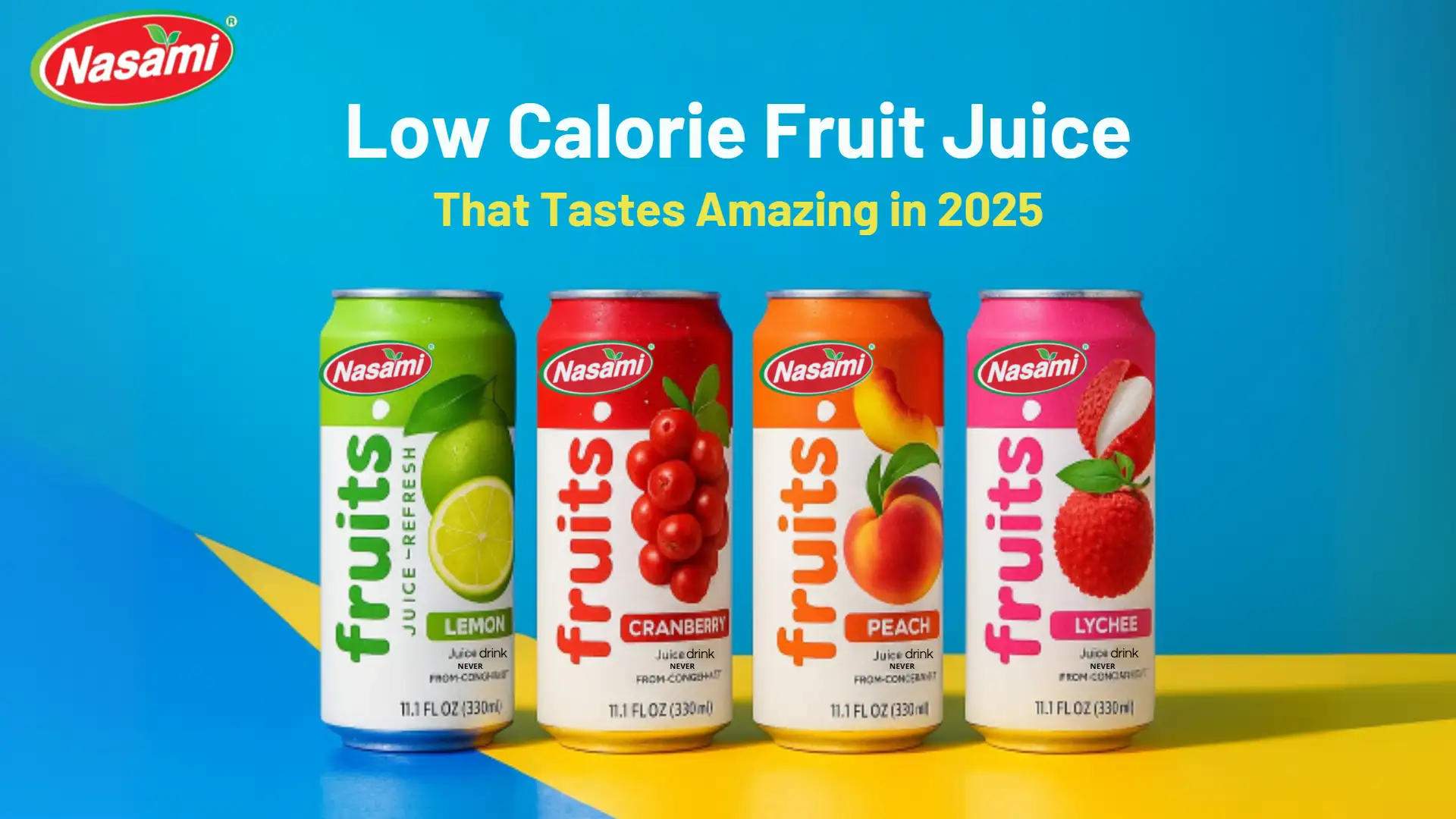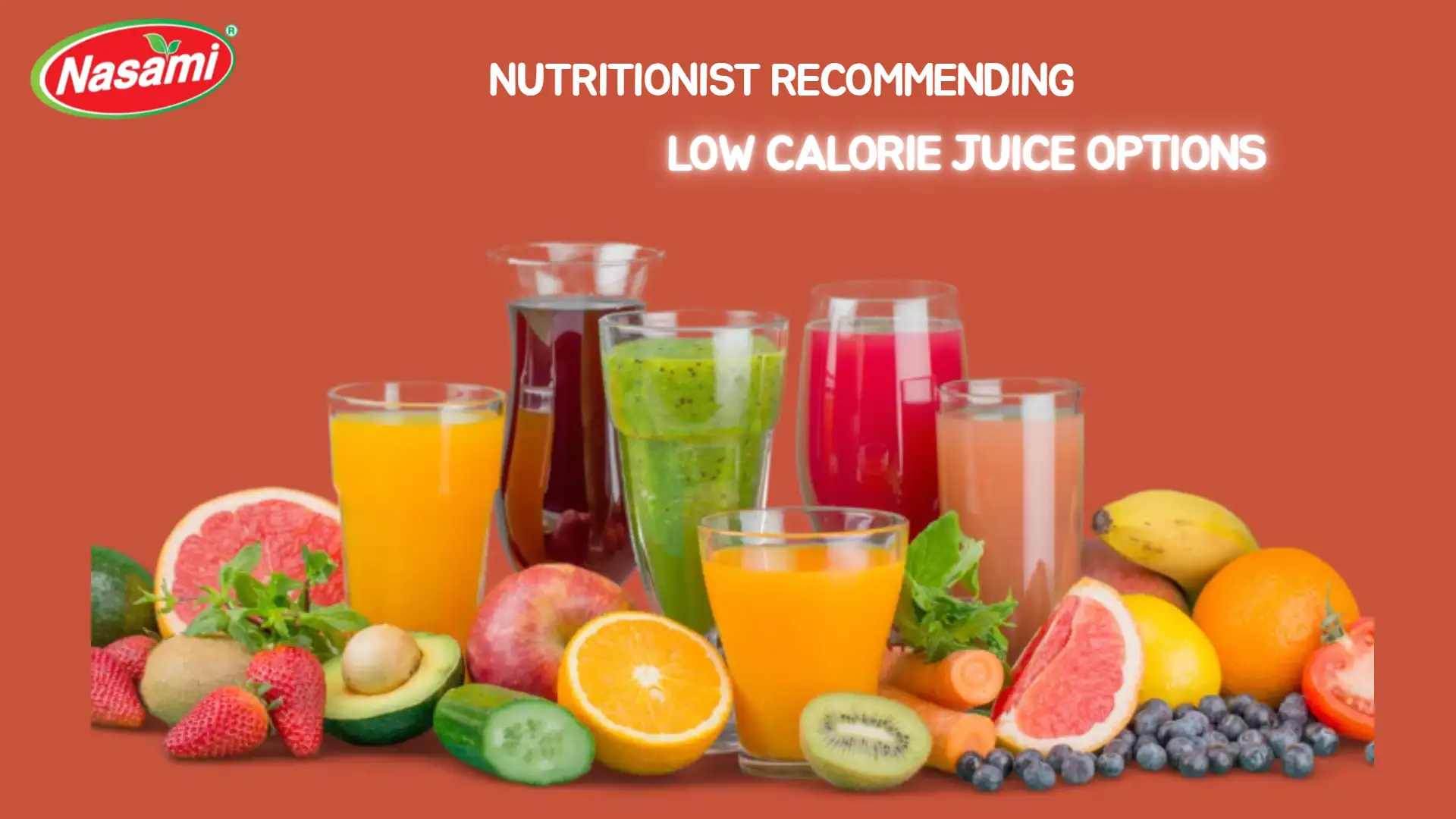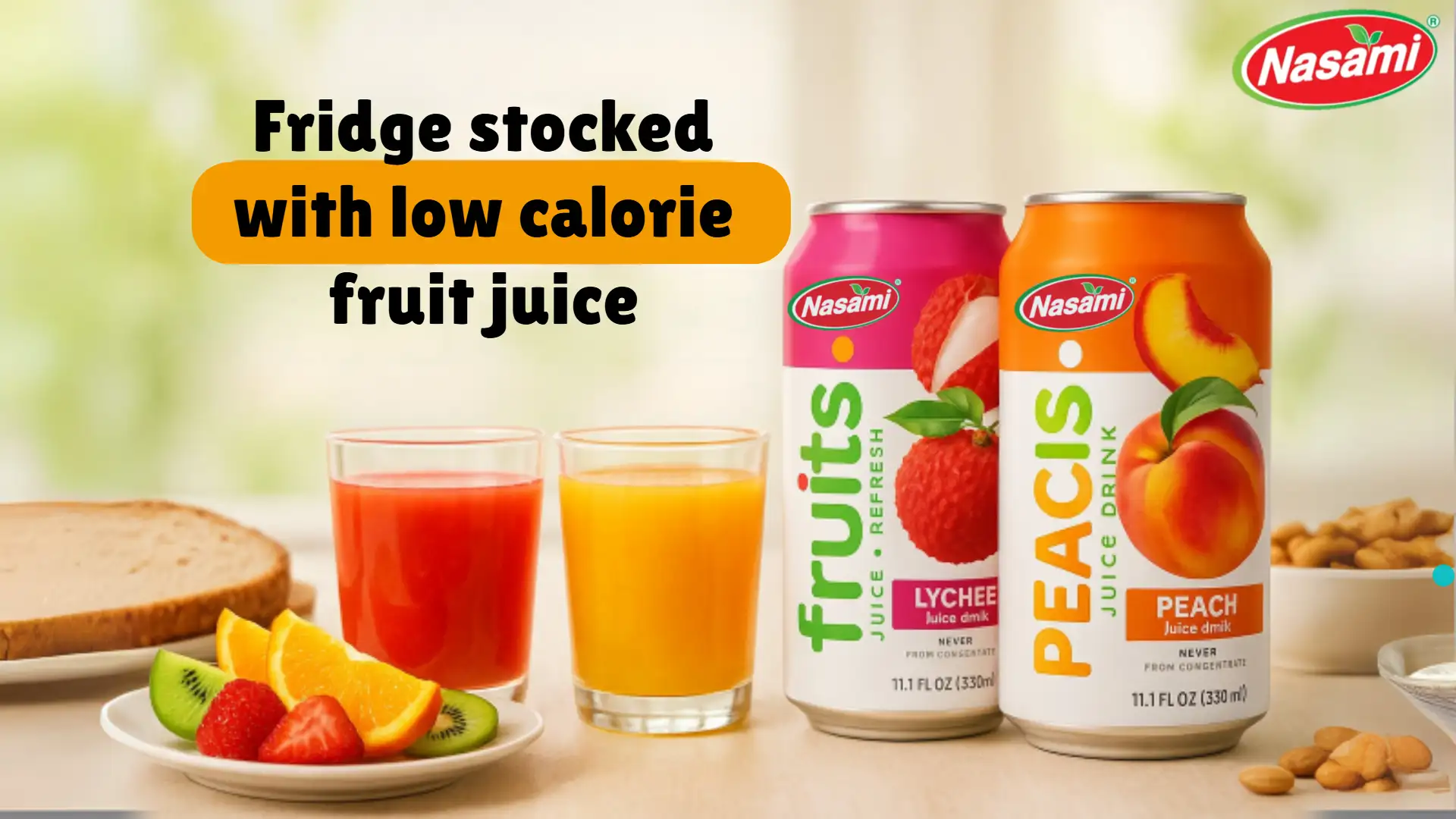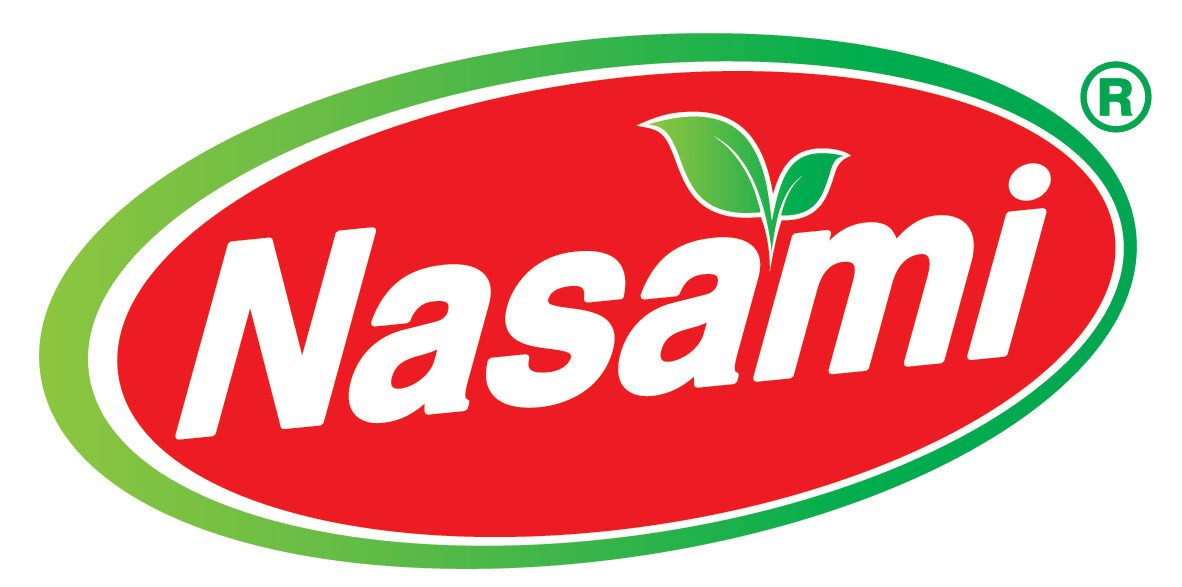Why Low Calorie Fruit Juice Matters in 2025
In a world increasingly focused on health-conscious living, more consumers are trading sugary sodas and heavy smoothies for low calorie fruit juices. And 2025 is the year this shift goes mainstream.
Table of Content
ToggleWith rising awareness about obesity, diabetes, and the impact of processed foods, people are turning to juice brands that offer clean, low-sugar, and flavorful options.
✅ Fun Fact: Low-calorie fruit juice consumption increased by over 38% in Asia-Pacific between 2022 and 2024.

What Makes a Juice Truly Low in Calories?
Not every drink labeled “light” or “natural” is genuinely low in calories. Here’s what sets a true low-calorie juice apart:
| Criteria | Ideal for Low-Cal Juice |
|---|---|
| Calories per 100ml | Under 40 kcal |
| Added Sugar | 0g or clearly below 3g |
| Fruit Content | At least 50–100%, diluted naturally if needed |
| Processing Method | Cold-pressed or lightly pasteurized |
| Sweetener Used | Natural (stevia, erythritol) or none |
🖼️ Image alt text: low-calorie-fruit-juice-label-checking-2025.jpg
Top Health Benefits of Low Calorie Fruit Juice
Why are health experts recommending these drinks? Here are the top 5 scientifically proven benefits:
Weight management – fewer calories, no fat, no guilt
Blood sugar control – ideal for diabetics when sugar-free
Digestive support – ingredients like pineapple, lemon, and cucumber aid digestion
Immune system boost – thanks to vitamin C, zinc, and antioxidants
Hydration – especially blends like cranberry, coconut, or watermelon
🧠 According to Mayo Clinic, choosing juice with <50 kcal/100ml can significantly reduce overall daily calorie intake without nutrient loss.
Taste vs. Health: Do Low-Cal Juices Actually Taste Good?
Yes — if done right. Modern juice makers like Nasami and Lakewood use advanced techniques like:
Cold-pressing
HPP (High Pressure Processing)
Natural fruit-blending (cucumber, lime, green apple)
These processes retain full flavor while reducing sugar and calories. No more watered-down or sour aftertastes — just pure, fruity refreshment.
7 Delicious Low Calorie Fruit Juice Picks for 2025
Nasami Peach-Cucumber Light
Only 23 kcal/100ml
Sweet with a crisp, hydrating finish
No added sugar, made with real fruit purée
Available in PET bottles & cans
Watermelon Mint Sparkling (No Sugar)
0g sugar, refreshing post-workout drink
Slight fizz for a soda-like experience
Only 18 kcal/100ml
Green Apple with Celery by Nasami
Sharp, tangy, surprisingly addictive
High in vitamin K, only 29 kcal/100ml
Orange Turmeric Blend – Cold Pressed
Immunity booster with natural citrus notes
No preservatives, under 35 kcal/100ml
Purple Grape & Hibiscus Light Juice
High in antioxidants, rich in flavor
No artificial color
38 kcal/100ml, no sugar added

Raw Mango Juice – Summer Limited
Tart and bold, diluted for calorie control
Only 27 kcal/100ml, best chilled
Young Coconut Water with Pulp
Natural electrolytes, perfect hydration
20 kcal/100ml, slightly sweet from nature
How Nasami Makes Low-Cal Juices Taste Better Than Ever
At Nasami, flavor and health go hand in hand. Here’s how the brand is winning the low-calorie fruit juice game:
🍃 No sugar added across its entire low-cal line
🧊 Cold-pressed extraction retains up to 95% flavor
🚫 Zero preservatives, zero artificial sweeteners
📋 Fully certified: FSSC22000, HACCP, ISO
🌍 Export-ready packaging: BIB, PET, aluminum can
🧪 Lab-tested batches for every lot
🖼️ Alt image: nasami-low-calorie-fruit-juice-production-2025.jpg
When to Drink Low-Cal Juice for Best Results
⏰ Recommended times:
| Time of Day | Juice Option | Benefit |
|---|---|---|
| Morning | Orange + turmeric | Energy + detox |
| Post-exercise | Coconut water or watermelon | Hydration + recovery |
| Afternoon | Grape + mint sparkling | Focus boost + hydration |
| Evening | Raw mango diluted juice | Digestive aid + relaxation |
❗Avoid drinking acidic juices on an empty stomach if sensitive.
How to Spot Fake “Healthy” Juices on Shelves
Many products claim “light” or “no added sugar” but hide behind tricky labels. Watch out for:
🚫 “From concentrate” – usually means added sugar or loss of nutrients
🚫 Fructose/glucose syrup – hidden sugars
🚫 “Natural flavor” with no real fruit content
🚫 >50 kcal per 100ml – not really low-cal
✅ Always read nutrition labels, not just front-of-pack claims.

Where to Buy the Best-Tasting Low-Cal Juices in 2025
🛍️ Online Stores:
Nasami.com (free samples for B2B)
iHerb (organic & keto-friendly options)
Amazon Global Store
🏪 In-Store Retailers:
Organic food sections at major supermarkets
Specialty drink stores
Airport health kiosks (Asia & Europe trend)
📦 Want to import Nasami juices? Get B2B support here →
Smart Sipping Tips
Low calorie fruit juice no longer means “tasteless” or “boring.” In 2025, it’s a smart, flavorful lifestyle choice that supports your health goals — from weight loss to hydration to detox.
View more:
